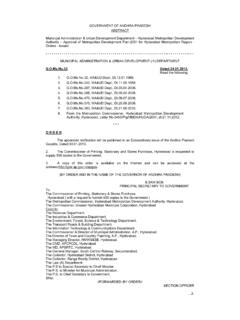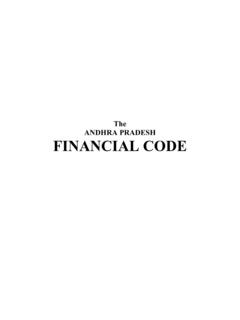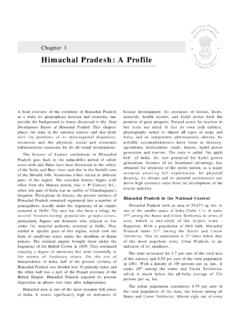Transcription of INFLUENCE OF CASTE IN INDIAN POLITICS
1 International Journal of Scientific & Innovative Research Studies ISSN : 2347-7660 12 | Vol (3) , Issue-2, February-2015 IJSIRS INFLUENCE OF CASTE IN INDIAN POLITICS Dr. B. N. Chaudhary, Associate Professor, PGDAV College (Eve.) (University of Delhi) ABSTRACT Ancient INDIAN scripture finds no mention of CASTE . The society was divided by Manu.(Ancient INDIAN Religious, Social and Political thinker) into four Varna s. Brahmin was top in hierarchy followed by Kshatriya, Vaish and Shudras. However there was a chance of vertical movement from one ladder to another upper ladder as this division was based on occupation.
2 We do find that a Rajrishi Vishwamitre could become a Brahamrishi. However the society degenerated with time and varna was replaced by CASTE . Today there are more than 3700 castes and sub-castes. This system of CASTE influences all aspects of our life particularly social and political life. It was hoped that with growing education and technology along with the mobility of mankind, the CASTE with system will die its own death. But unfortunately it has consolidated its position. Honor killing could be seen in any part of India. Worst, it influences POLITICS . Right from the distribution of tickets to formation of ministries and even policies decisions of the government is influenced by CASTE . In this paper, I propose to understand the meaning of CASTE and its impact on POLITICS in INDIAN context. INTRODUCTION CASTE system in INDIAN context was primarily prevalent in Hindu society but it has spread its wing to Muslim community also.
3 Sikhs are also not untouched. The common impression that INDIAN society is a CASTE infected society is Infact very true. It was assured that after independence this evil will be finished. Article 17 of the Constitution abolishes the practice of untouchability. Untouchability was based on CASTE and violated the dignity and very existence of a human being. Practice of untouchability is an offence and any one doing so is punishable by law. Unfortunately, democratic process of India consolidated CASTE system. CASTE based reservation first for Scheduled CASTE and Scheduled Tribe and later on for backward classes strengthened the CASTE system and CASTE got importance and share in political decision making process. It influenced the political life from panchayat level to national level.
4 This paper tries to verify and illustrate the premier hypothesis that CASTE influences the INDIAN POLITICS in a significant way. MEANING OF CASTE The term CASTE has been defined by various scholars in different ways. Cooley in his book writes, When a class is somewhat hereditary, we call it CASTE . i Rishley writes, A CASTE may be defined as a collection of families or group of families bearing a common name which usually denotes or is associated with specific occupation claiming common descent from a mythical ancestor, human International Journal of Scientific & Innovative Research Studies ISSN : 2347-7660 Vol (3) , Issue-2, February-2015 IJSIRS 13 or divine professing to follow the same professional calling and are regarded by those who are competent to give an opinion as forming single and homogenous community.
5 Ii I may point out here that sir Herbert hope Rishley was a colonial administrator and he worked extensively on tribes and CASTE . He was in-charge of 1901 census and it is important to note that he is the one who formally applied the CASTE system to the entire Hindu population of British India. However, after the independence, with the rise of Science and Technology, urbanization and due to reservation policy there was change in the profession of different CASTE and thus changed the administrative as well economic position of different CASTE . However with the change, incidentally the feeling of CASTE strengthened itself and social behavior reflect that an officer or a business of particular CASTE considers it to be his pious duty to help his CASTE fellow. Another study was made extensively on CASTE was by who worked mostly in the United province.
6 His area of study was particularly Agra and Oudh. Again Blunt was a British Civil Servant. He wrote, A CASTE is an endogamous group or collection of endogamous groups, bearing a common name, membership of which is hereditary imposing on its members certain restriction in the matter of social intercourse claiming a common origin and generally regarding as forming a single homogenous community. iii But an analysis would suggest that the question of endogamy is no more important as far as the CASTE structure is concerned. Marriages between different castes are taking place amongst the educated classes. Even the religious line is not strong today. However when it comes to rural or uneducated masses, tensions could be seen between two families or between two communities.
7 However, judiciary have played very important role. It provides security to the couple and severely punishes those who create problem for them. Prof. writes, A sociologist would define CASTE as a hereditary endogamous, usually localized group having a traditional association with an occupation and a particular position in the local hierarchy of CASTE . Relations between castes are governed among other things, by the concepts 0f pollution and purity, and generally, maximum commensality occurs within CASTE . iv Though I have differences on the point of endogamy with the development of science and technology, it must be agreed that the CASTE consciousness has strengthened with such development as it is easy now to keep in touch with the people of the same CASTE irrespective of distance he is living.
8 However, if the definition of is added with the observation of Robert Maciver, the definition may be complete to a great extent. Maciver observes when the status is wholly pre-determined, so that men are born to their lot without any hope of change in it, then the class takes the extreme form of CASTE . v CASTE AND POLITICS After independence, the entire population was given the right to vote at one go (Universal Adult Franchise) to establish an egalitarian society based on equality and justice. First general election proved a simple theory. Those who fought for independence will rule the country. That was the mandate. But by 1957, two things came to fore-planning to introduce the panchayat raj system on one hand and lohia s theory of share in power in accordance with the strength of CASTE .
9 (here strength implied the population). These two factors, instead of degenerating the CASTE system, strengthened it. Also the election from local level to national level gave a tool in the hands of oppressed CASTE to oppose the oppressor and elect their own leader who could further their hopes, expectations and aspirations. Srinivas says that this was quite expectable consequence of universal suffrage. People vote for the men with whom they identify and the fundamental unit of identification was and still is CASTE . But this is at odds International Journal of Scientific & Innovative Research Studies ISSN : 2347-7660 14 | Vol (3) , Issue-2, February-2015 IJSIRS with the aims of country s political leaders who seek to establish a casteless society.
10 Vi Ironically, CASTE is so tacitly and so completely accepted by all, including those who are most vocal in condemning it, that is everywhere the unit of social Now let us take example of few states from all corner of the nation to prove that the CASTE plays a very dominant role in POLITICS . Beginning from Rajasthan we find that Swatantara Party was dominated by Rajputs, wealthy classes, landlords and other dominant section of the society. This party had maximum 2 to 4 MLA s in Bihar also (In different assembly elections) and they were the big zamindars and forward class business magnets. At local level, discussing about panchayat raj election, Ghurye observes, on the village level, in panchayat raj elections, the toughest struggle was alleged in jodhpur division where one of the candidate was chosen for opposing the alleged Jat oppression, the other pleaded for a combined Jat-Ahir-Gujar-Mina combination construable against the Rajput s.





